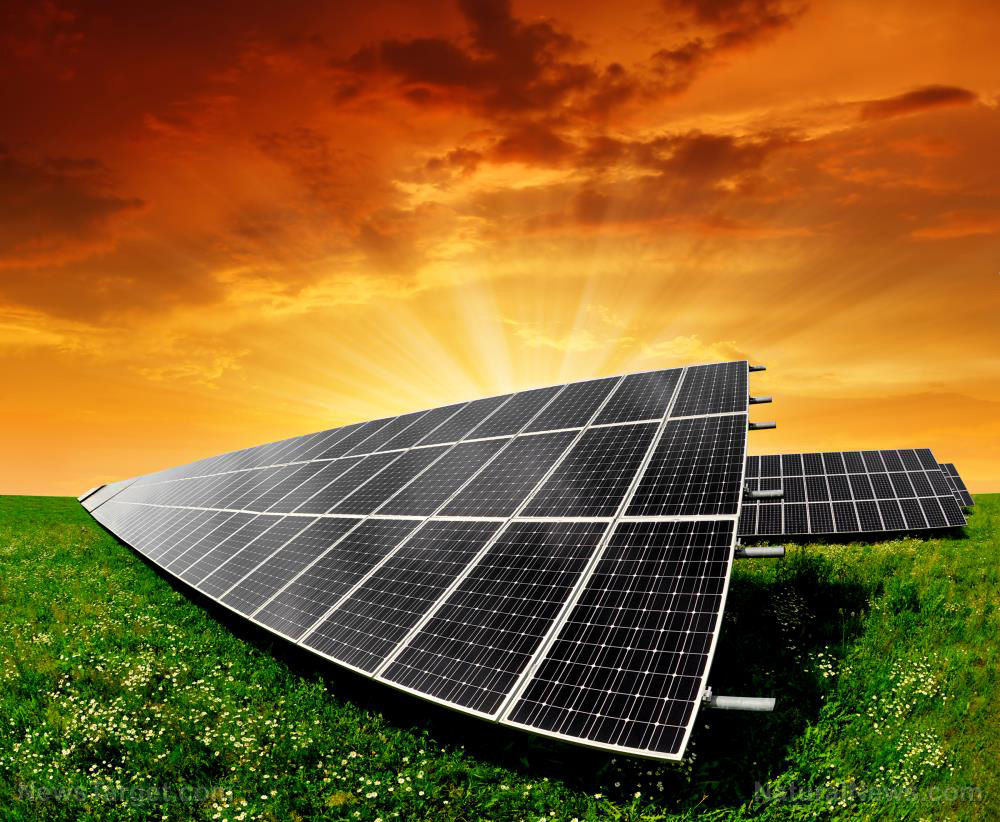
Researchers reported that coffee's primary stimulant increased the efficiency of perovskite photovoltaic cells, an alternative approach to solar power. When bolstered by caffeine, perovskite solar panels may match the performance of their more expensive conventional silicon counterparts.
The project received support from the University of California, Los Angeles (UCLA) and the Chinese investment company Solargiga Energy. They published their findings in the scientific journal Cell.
“One day, as we were discussing perovskite solar cells, our colleague Rui Wang said, 'If we need coffee to boost our energy then what about perovskites?'” recalled UCLA researcher Jingjing Xue. “'Would they need coffee to perform better?'”
It so happens that caffeine is an alkaloid compound. Its molecules are capable of interacting with the precursor ingredients of perovskites, the key material in perovskite-based solar technology. (Related: How to build your own DIY portable solar power box for emergencies.)
Caffeine boosts performance of perovskite solar cells
Perovskites are a class of compounds with a distinct crystalline structure. In perovskite solar cells, these crystals form the layer that gathers light for conversion into electricity.
Unfortunately, perovskites become unstable when they get hot. Researchers have tried to increase their thermal stability by adding chemical compounds to the light-harvesting layer.
Despite improvements, perovskite solar cells remain much less efficient and stable than conventional counterparts. However, no one has ever tried to add caffeine to them.
Upon conceiving the idea of bonding caffeine to perovskite over cups of coffee, Xue, Wang, and the other UCLA researchers decided to test it in the lab. They set up 40 solar cells and added caffeine to the layer of each unit.
Initial evaluation through infrared spectroscopy showed that the caffeine formed chemical bonds with perovskite. The researchers dug deeper into the matter.
They knew that caffeine contains carbonyl groups, a carbon atom with double bonds to an oxygen atom. They found that these groups bonded with lead ions in the perovskite layer.
The interaction between caffeine and perovskite produced a molecular lock that raised the minimum amount of energy that the film needed to react. The efficiency of the solar cell rose from 17 percent to more than 20 percent.
Making a cheap and easy-to-produce solar cell even more effective
UCLA researcher Rui Wang was surprised by how quickly caffeine took to perovskite. Their first attempt immediately increased the performance of the photovoltaic cells very close to the highest value they reported in the paper.
He and his colleagues thought that caffeine's performance-boosting effects only applied to solar panels that used perovskite materials as light-harvesting material. The special structure of caffeine molecules made it possible to bond with perovskite precursors, but not with silicon.
Perovskite solar cells have several advantages over silicon-based photovoltaics. The former use cheaper materials in their construction and have greater flexibility.
Not only are perovskite-based cells less expensive, but they are also easier to produce. Silicon solar panels require solid crystal ingots that are bulky and difficult to work with.
In comparison, perovskite uses solution-based precursor materials. It is easy to add performance-boosting caffeine to the solutions.
“Caffeine can help the perovskite achieve high crystallinity, low defects, and good stability,” explained Wang. “This means it can potentially play a role in the scalable production of perovskite solar cells.”
Wang and his colleagues will keep studying the caffeine-incorporated perovskites. They think that the substance will make it possible to mass-produce perovskite solar cells in the near future.
Sources include:
Please contact us for more information.























